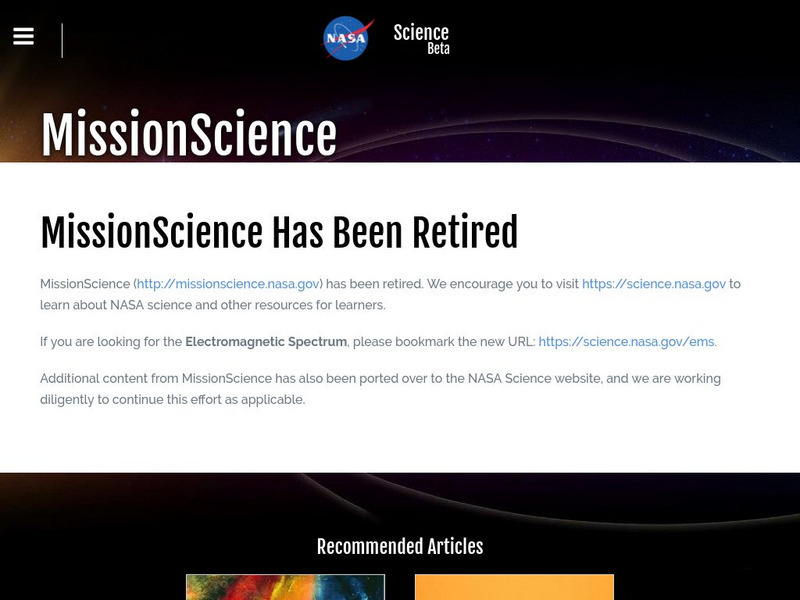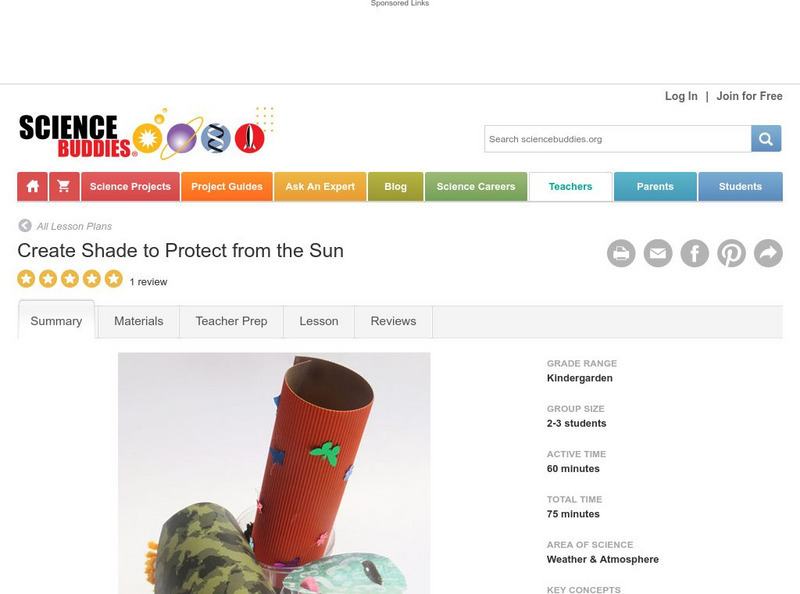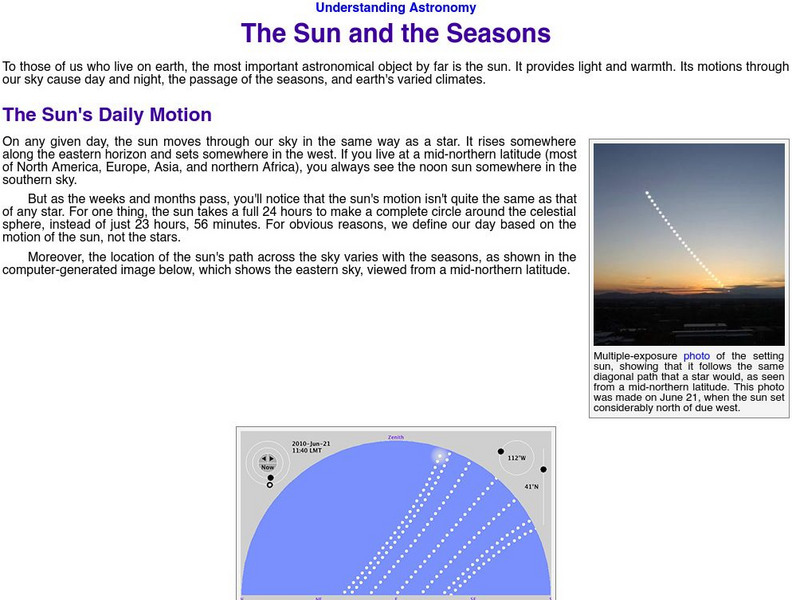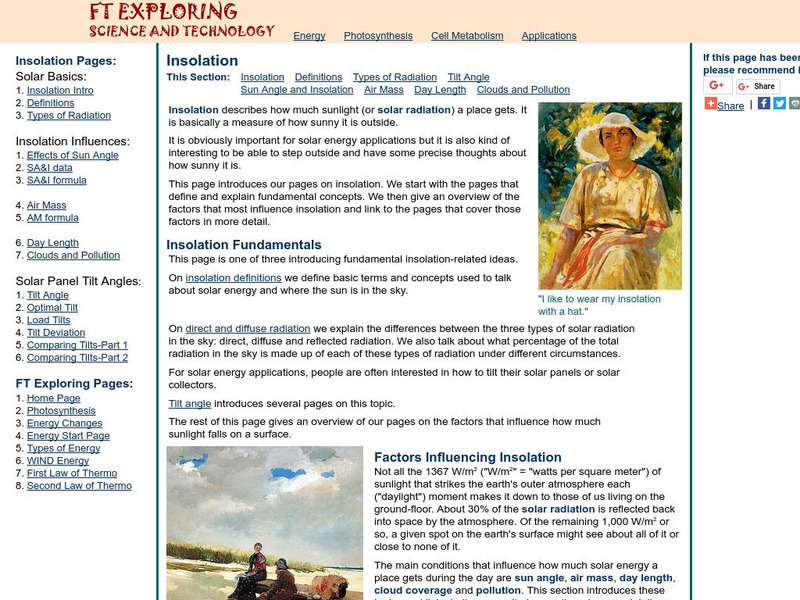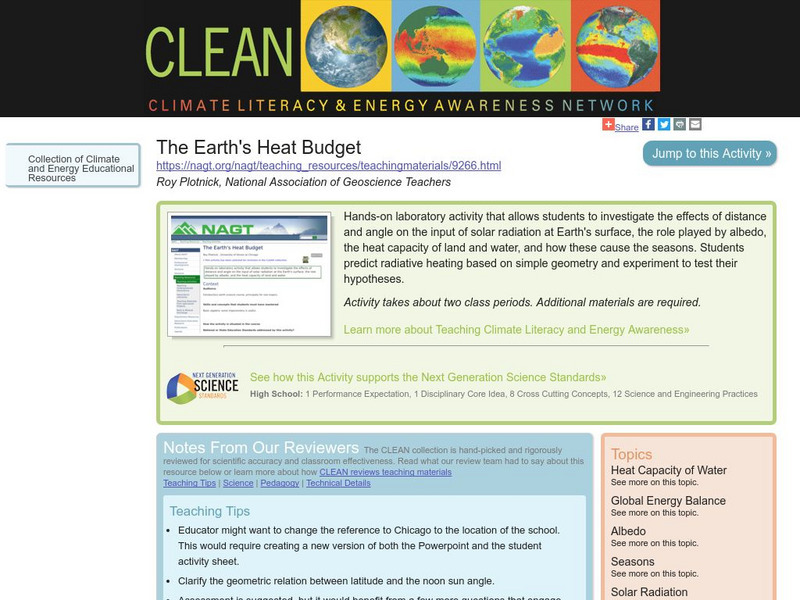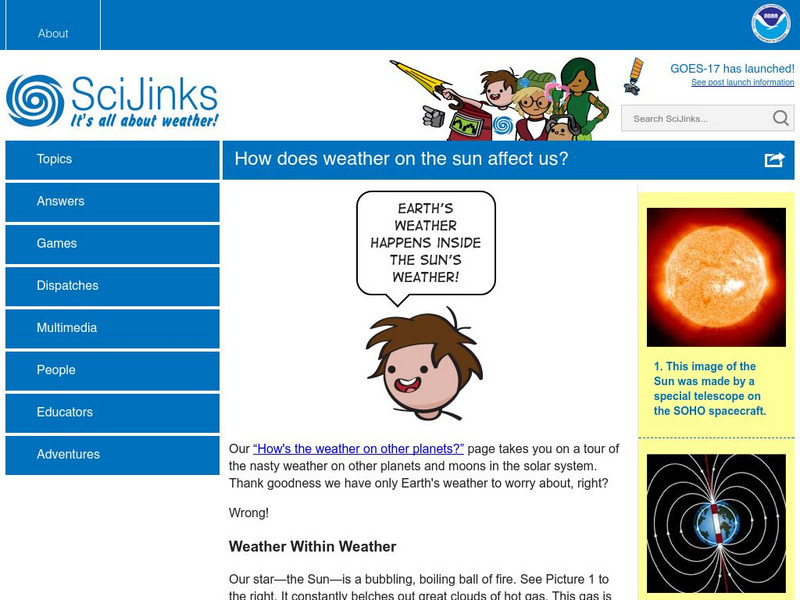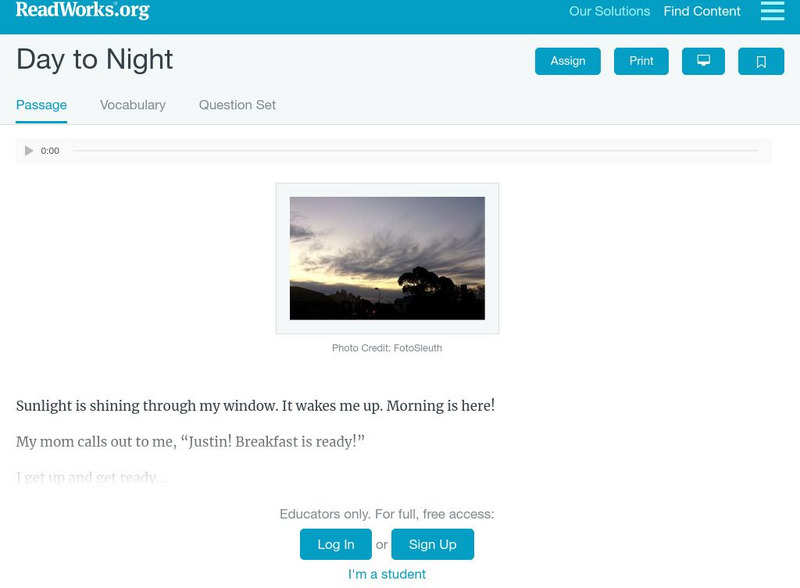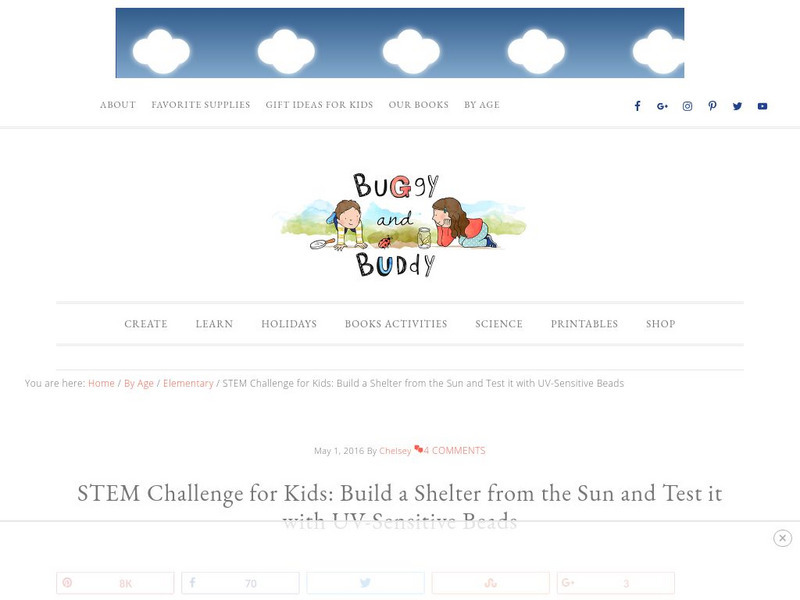Science Buddies
Science Buddies: Tracking Geomagnetic Storms in the Ionosphere
The Sun is the ultimate source of the energy that powers weather systems on Earth. Geomagnetic storms are sun-powered storms in the upper atmosphere, arising from energized particles that are periodically ejected by the Sun. Among other...
Other
Space weather.com
Want to know what the current weather conditions are in space? Find everything here you may want to know about the latest solar flares, sunspots, asteroids and more. Site also includes essential web links to quench any user's thirst for...
NOAA
Noaa: National Weather Service: The Sun and Its Effect on the Earth [Pdf]
The Space Environment Center (SEC) put together a slide show for use by teachers on Space weather. Begin with discussing solar emission and the sun itself. Then end with a summary of climatic effects of space weather, and a note on space...
NASA
Nasa: Mysteries of the Sun
Learn about the study of the Sun's influence on the solar system called Heliophysics. This site contains videos on topics like Space Weather, Solar Variability, the Heliosphere, Earth's Magnetosphere, and the Earth's Upper Atmosphere.
CPALMS
Cpalms: Daytime and Nighttime
The user looks at the daytime and nighttimeand what makes eachtime special as the student completes this interactive tutorial.
National Geographic
National Geographic: Build a Solar Eclipse Viewer
This lesson focuses on How can you safely view a solar eclipse and solar activity? It provides step-by-step instructions for building the viewer and how to use it properly. It also provides a video and informational slides.
Better Lesson
Better Lesson: A Place in the Shade an Engineering Challenge
Kindergarteners can participate in the engineering and design process in this challenge in which they try to keep an ice cube from melting. Included in this lesson are samples of student's structures, a video of a kindergarten class...
Other
Massachusetts Department of Education: Sunlight Warms Earth's Surface
This unit contains a series of lessons that allow students to explore the effect of sunlight on Earth's natural surfaces of sand, soil, rock, and water. In addition, students explore how the color and material of a surface affects how...
Science Buddies
Science Buddies: Create Shade to Protect From the Sun
In this fun activity, students will get creative with craft materials. They will figure out how to protect an "animal" and its territory from getting too hot in the sun. What will they build to keep their animals cool?
Other
Weber State University: The Sun and the Seasons
To those of us who live on earth, the most important astronomical object by far is the sun. This article explains how the motion of the sun through our sky cause day and night, the passage of the seasons, and earth's varied climates.
University Corporation for Atmospheric Research
Ucar: Earth's Energy Balance
See how Earth's temperature would change if the Sun's brightness increased or dimmed or if Earth's albedo was different.
Utah Education Network
Uen: Trb 3:5 Investigation 3 It's Hot
Activity helps to understand the effect of sunlight on the earth.
NASA
Nasa: Polar Ice and Its Possible Effects on the Earth
This article describes the effects of polar ice caps on the Earth and offers explanations as to the possible effects of polar ice melting on sea level and temperature.
FT Exploring
Ft Exploring: Insolation and Solar Availability
Learn about insolation, or how much sunlight or solar radiation any given place on Earth receives based on many factors.
American Association of Physics Teachers
Com Padre Digital Library: Open Source Physics: Astronomy: Sidereal Solar Day
A computer based simulation demonstrating the difference between a sidereal day and a solar day.
Climate Literacy
Clean: Earth's Albedo
This engaging activity introduces students to the concept of albedo and how it relates to Earth's energy balance. They measure the albedo using maps, data tables, and a shaker filled with popcorn kernels. Then, they estimate the Earth's...
Climate Literacy
Clean: The Earth's Heat Budget
Students investigate the effects of distance and angle on the input of solar radiation at the Earth's surface, the role played by albedo, and the heat capacity of land and water.
NASA
Nasa: Sci Jinks: How Does Weather on the Sun Affect Us?
Discover how the weather on the sun can affect things that happen here on the Earth.
Read Works
Read Works: Day to Night
[Free Registration/Login Required] A literary text about a typical day in the life of a boy named Justin. A question sheet is available to help students build skills in reading comprehension.
Annenberg Foundation
Annenberg Learner: Journey North: Judy Brophy: The Sun's Daily Cycle
Impressive animated slideshow presentation on the sun's daily cycle and how the sunlight changes hour by hour over the course of a day. Includes a teacher guide with lesson plan ideas and activities.
PBS
Pbs Kids: Design Squad Challenge: Speedy Shelter (Pdf)
This is a hands-on challenge to invent a sturdy emergency shelter that's easy to build. Provides a full list of materials with ideas on how to build, test, and redesign it if necessary. Activity focuses on the engineering design process...
Other
Buggy and Buddy: Stem Challenge for Kids: Build a Shelter From the Sun
For this lesson, kids build a shelter from the sun and test it using a UV-sensitive bead animal they create. If the shaded animal changes colors, then your shelter did not work.
Other
Missouri Department of Economic Development: Radiant Energy [Pdf]
A one-page fact sheet explaining that the Sun provides radiant energy to the Earth and the processes that the energy plays a part in.
Physics Aviary
Physics Aviary: Solar Flux Lab
This lab is designed to have students investigate the factors that determine the amount of energy collected by a solar panel when the sun light is shining straight down to the ground.




![Noaa: National Weather Service: The Sun and Its Effect on the Earth [Pdf] Website Noaa: National Weather Service: The Sun and Its Effect on the Earth [Pdf] Website](https://d15y2dacu3jp90.cloudfront.net/images/attachment_defaults/resource/large/FPO-knovation.png)
